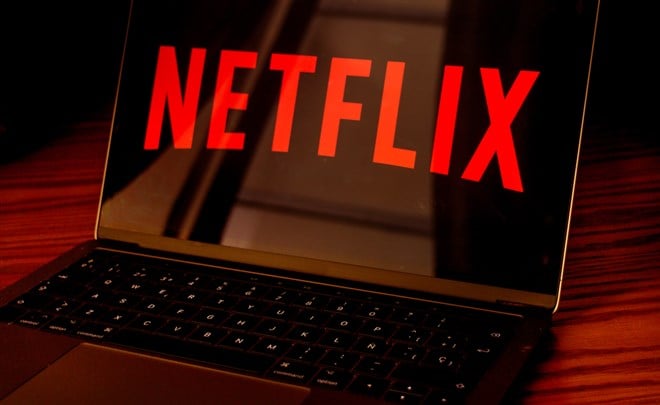
Key Points
- Subscriber additions beat the estimate, raising the stock by 15% in one day
- Netflix (and investors) hope(s) the ad-supported tier will increase revenue
- Earnings growth has been consistently better every quarter/year
- Netflix is outpacing the S&P and Nasdaq indexes as well as some of its competition
While analysts do not agree across the board about the near future of Netflix (NASDAQ:NFLX), the majority think it wise to wait just a little longer, giving them a HOLD rating. Indeed, even after a recent, and unexpected, performance bump that boosted its outlook—and despite the fact that many would argue in favor of a BUY rating—there may be more to come from the streaming giant.
Is the Netflix Subscriber Exodus Over?
Netflix share value ($297.13) jumped 15% this week on significant earnings beat as their subscriber exodus seems to have come to an end. The streaming media company added more than 2.4 million new subscribers last month, recovering twice as many subscriptions as they lost in the first half of this year, and doubling their initial expectations just before the launch of their new ad-supported tier. Analysts had only projected that Netflix would add only about 1.1 million subscribers.
Indeed, the ad-supported version of the service is set to arrive in the fourth quarter, with Netflix executives reporting they expect to bring on at least 4.5 million new subscribers. This, they hope, will bring in about $7.78 billion in revenue, up from $7.71 billion since around the same time last year. While analysts had actually estimated these numbers would be slightly higher—4 million new subscribers to the tune of $7.97 billion—the reported amounts are still impressive.
Bolstered By Solid Earnings and Stable Growth
All of this has led to a current Earnings Per Share (EPS) of $2.14 on sales of $7.8B with a current stock value of $240.86. This value is, admittedly, near the bottom of the 52-week range: $162.71 to $700.99. The stock's recent decline stared about a year ago but escalated as the holiday season closed and the new year began. However, the next reporting date is Oct 19, and with things improving this could change quickly.
That said, more than three dozen analysts offering 12 month price targets for Netflix have arrived at an average consensus price target of $297.13 for the quarter. This comes with an upside of +23.36% and a range $157 to $730. Furthermore, analysts appear to be somewhat split on the stock with a rough 3:2:1 ratio (Hold:Buy:Sell)
On a quarterly basis, earnings have consistently beat not only the consensus estimate but also the range, and often by a great margin. For example, Netflix reported earnings of $3.19 per share in the third quarter of 2021, beating the top of the range by nearly 20%!
The streaming service closed out the year ahead as well, as the reported earnings of $1.33 bested the range by about a nickel. Netflix beat the 2022 Q1 by the same margin with reported earnings of $3.53. Last quarter, NFLX stock failed to meet the range for the first time in at least a year, but at $3.20, earnings was still about $0.25 up from the consensus estimate.
Annually, earnings appear to reflect a little more upward mobility, with the target increasing incrementally every year, from $2.64 in 2018 to $10.72 in 2022. While earnings only beat the range once—and failed to beat the estimate once as well—these numbers definitely confirm that the company has improved their outlook every year.
A quick look at the sales numbers support this, as both quarterly and annual sales consistently registered at—or slightly above—the consensus estimate for their respective time frames.
Netflix Is Strong in the Face of Competition
Of course, the past couple years have been a bit of a boon for streaming services as the pandemic kept many people at home for an extended amount of time. As such, competition increased greatly in the streaming space and just about every company has experienced notable growth despite the S&P 500 falling nearly 23%. Similarly, Netflix's native index, the Nasdaq, fell only about 1%--as a whole—on the same day that Netflix got the boost.
Perhaps what is most impressive about Netflix's gains, then, is that their numbers are outpacing some of their peers, like Walt Walt Disney (NYSE:DIS) and Comcast (NASDAQ:CMCSA).
For example, while Netflix may have the lowest gross revenue of the three ($29.70B, which is about 45% that of DIS and about 25% that of CMCSA), its earnings per share ($11.25) are at least 4 times higher than CMCSA ($3.06) and nearly 10 times higher than DIS ($1.72). In addition, Netflix has a better net margin than both Disney and Comcast (16.42% compared to 3.87% and 11.54%, respectively). Finally, Netflix's Return on Equity is nearly double that of Comcast (and more than four times higher than Disney).
On the other hand, both Comcast and Disney have an upside roughly 55% higher than Netflix. In a few other categories one or the other has better numbers, too. DIS, for example, has a P/E ratio of $57.26, which is more than double that of NFLX. CMCSA, however, has a net income of $14.16, which is nearly three times higher than NFLX (which is more than double that of DIS). And of the three, Comcast is the only stock with a net positive beta, though at 0.98, it is still not very stable.
While Netflix does not always show better numbers than Disney or Comcast, though, analysts appear to favor Netflix about 2:1 over Comcast as well as Walt Disney. This definitely justifies the HOLD rating (with expectations that it will likely change after the earnings report).
Companies in This Article: